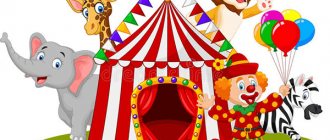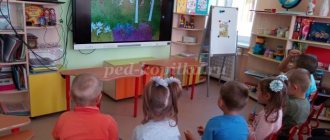Such a distant and endlessly attractive space! Not every adult fully understands the fullness of this concept, let alone children. Let's try to tell children about space as clearly and interestingly as possible. If we succeed, perhaps the child will not just become interested in astronomy for a while, but will truly love it and be able to make some grandiose scientific discovery in the future. When telling your child about space, imagine how, as an adult, he will remember your story with a smile on his face. What should you tell your child about space and, most importantly, how?
Space has attracted and continues to attract the views and thoughts of man of all times and peoples. After all, there are so many secrets, so many inexplicable and amazing discoveries and opportunities. Yes, and we - the humanity of planet Earth - although small, are still a particle of the cosmos - this boundless and alluring space.
Just the main thing
What can you tell us about space? First of all, learn to observe! If we look at the sky at different times of the day, we will see the sun, moon and stars. What is it? All these are space objects. The vast universe consists of billions of cosmic objects. Our planet Earth is also a space object; it is part of the solar system.
The system has this name because its center is the Sun, around which 8 planets move: Mercury, Venus, Earth, Mars, Jupiter, Saturn, Neptune and Uranus. The path they take around the Sun is called an orbit.
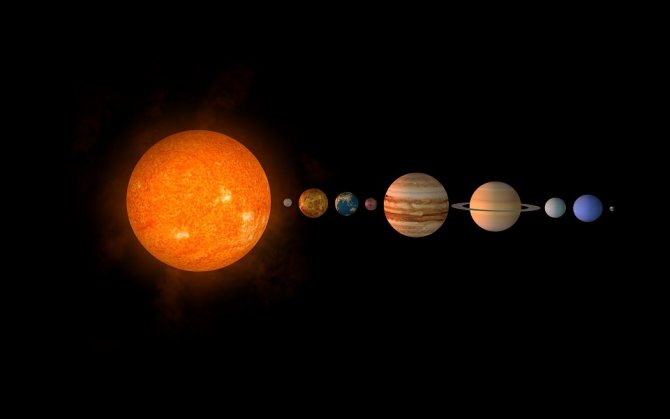
SPACE TELESCOPE
Astronomers have always dreamed of good conditions for observing the stars. They climbed high into the mountains, where the atmosphere was cleaner, and built large telescopes to distinguish faint stars. But the best place to study the starry sky is space, where there is no atmosphere. And in 1990, the Hubble Space Telescope was launched into earth orbit. The telescope weighed 12 tons, the diameter of its mirror was 2.5 meters. Using a space telescope, astronomers obtained photographs of extremely high resolution, inaccessible to earthly telescopes. The “visual acuity” of the Hubble telescope is such that it can see a small fly from a distance of 10 kilometers. The space telescope has helped discover thousands of new stars, galaxies and nebulae. For the first time, the surface of the huge star Betelgeuse in the constellation Orion was photographed. The results of the telescope's observations truly exceeded all possible predictions. He looked into the depths of the Universe, showed astronomers stars located at a distance of many billions of light years from us. This wouldn't be bad at all:
Observe the orbit of Saturn,
Admire the constellation Lyra,
Detect black holes
And definitely compose a treatise -
"Explore the depths of the Universe!"
(Tim Sobakin)
Today, there are dozens of different specialized telescopes in Earth orbit, each of which examines celestial objects in a special wavelength range: Copernicus, Astron, Uhuru, Einstein and many others.
In July 1999, the Columbia spacecraft launched the Chandra X-ray telescope into orbit, designed to study cosmic radiation and mysterious “black holes.”
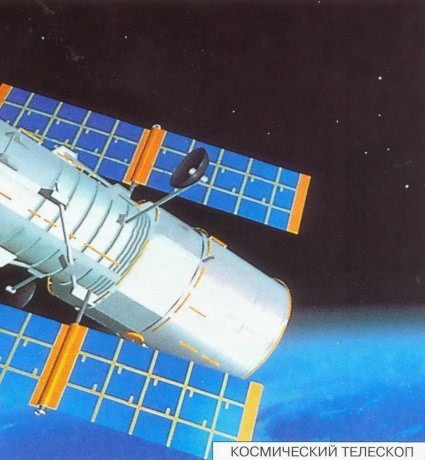
Planet Earth
The only planet on which there is life at the moment is our Earth. The main difference between the Earth and other planets is the presence of water - the source of life and the atmosphere, thanks to which the Earth has the air that we breathe.
We learned a lot of fascinating things about planet Earth thanks to the adventures of Chevostik in his time. There are also visual experiences and experiments. For more details, read the article “Planet Earth. Travels with Chevostik."
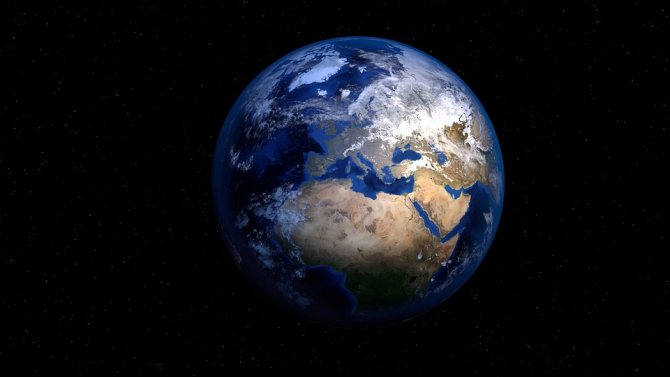
Where to look at the stars in Moscow
Observatories
Moscow City Palace of Children and Youth Creativity
m. University, st. Kosygina, 17, cor. 1 Price: free.
Astronomical Observatory of Moscow (State Astronomical Institute named after P.K. Sternberg at Moscow State University)
Moscow, Universitetsky Prospekt, 13 Price: free.
Observatory at the Moscow Planetarium
m. Barrikadnaya, Sadovaya-Kudrinskaya, 5, building 1 Price: on weekdays 250 rubles, on weekends 300 rubles.
People's Observatory on the territory of Gorky Park
m. Gorky Park, Oktyabrskaya. Price: 200 rub.
People's Observatory on the territory of Sokolniki Park
m. Sokolniki, park territory Price: 150 rub. From Thursday to Sunday you can rent an external telescope for 50 rubles.
Other planets of the solar system
The rest of the planets are no less interesting and alluring. The largest planet is the mighty Jupiter. And Saturn is famous for its giant rings, visible to us from Earth. Mars is the first planet to attract the attention of man back in Ancient Egypt. Because of its fiery red color, ancient people associated Mars with the god of war. The planet Venus is the only one that has a “female” name. She received it thanks to her brightness. In ancient times it was considered the brightest planet.

While studying poems about Space, my son and I fell in love with this little counting rhyme that helps us remember the names and order of the planets:
An astrologer lived on the Moon. He kept track of the planets: MERCURY - one, VENUS - two, three - EARTH, Four - MARS, Five - JUPITER, Six - SATURN, Seven - URANUS, Eight - NEPTUNE, Nine - the farthest PLUTO, Who If he doesn’t see it, get out!
(Ya. Akim)
Is Pluto not a planet?
It is also worth noting that until 2006, the world community identified 9 planets in the solar system. However, due to Pluto’s failure to meet one of the definitions of planets, it was recognized as a dwarf planet and “excluded” from the list of planets of the solar system.
Points that determine that a cosmic body is a planet:
- The object must orbit the Sun - And Pluto passes through.
- It must be massive enough to ensure a spherical shape with its gravitational force - And here everything seems to be in order with Pluto.
- It must not be a satellite of another object. Pluto itself has 5 moons.
- It should be able to clear the space around its orbit from other objects - Aha! This is the rule that Pluto breaks, this is the main reason why Pluto is not a planet. (Source)
Lesson summary “Mysterious space”
Summary of a lesson on cognitive and research activities for children 4-5 years old
"MYSTERIOUS SPACE"
Prepared by:
Teacher 1st category
Kozlova O.M.
Target:
Formation of elementary ideas about space, about the first flight into space
Objectives:
- Educational: to consolidate children’s knowledge that the first cosmonaut was Russian citizen Yuri Alekseevich Gagarin;
— Developmental: develop memory, speech, observation, interest in learning about the world around us; — Educational: to cultivate patriotic feelings, pride for our country, for the heroes of pilots - cosmonauts who conquered space Planning:
1. Looking at albums: “Spaceships”, “Space” 2. Looking at pictures: “Planets of the solar system”, “First flight of man” into space" 3. Conversation "Mysterious space..." 4. Physical exercise "Space" 5. Didactic game "Place the planets in order", "UFOs and aliens" 6. Construction "Rocket" 7. Game "Cosmonauts" 8. Reading "Grandfather story about space"
Progress of the lesson:
MORNING
1
.
Review of the albums “Spaceships”, “Space”; 2.
Examination of the pictures “Planets of the solar system”, “The first flight of man into space”;
3.
Conversation “Mysterious space...”
— Since ancient times, people have looked at the sky and wondered what is behind the clouds if they rise above them. A lot of time has passed since then until people learned to build aircraft. And two people helped them in this: first, Konstantin Dmitrievich Tsiolkovsky, the first inventor of rockets, and then Sergei Korolev, who brought Tsiolkovsky’s ideas to life, improved them, invented an aircraft and made people’s dream of conquering space come true. It was these 2 people who laid the foundation for space exploration. ( showing photos of inventors, spacecraft)
— Guys, do you know who was the first to fly into space?
(photos)
- And only after other dogs had successfully flown into space did the first man go there.
On April 12, 1961, cosmonaut Yuri Alekseevich Gagarin flew into space. (showing a photo of the astronaut)
- His flight lasted 1 hour 48 minutes.
During this time, he flew around our planet Earth and returned back. (teacher shows the globe)
- What is this?
(children's answers)
A globe is a small model of the Earth.
— What shape is our planet? - What color? - Why blue? (there are many rivers, lakes, etc. on our planet)
- What qualities do you need to have to become an astronaut?
(children's answers)
- An astronaut must know a lot and be able to do a lot, and also be healthy.
After flying into space, Yu.A. Gagarin improved his skills and trained cosmonauts. He tragically died in a plane crash while on a training flight. His hometown was renamed the city of Gagarin. The name of Yuri Gagarin was given to: the Air Force Academy, the cosmonaut training center, educational institutions, streets and squares of many cities around the world, and monuments were erected. — After Gagarin, many cosmonauts visited space, including women. The world's first female cosmonaut is Valentina Tereshkova. (showing a photo of an astronaut) 4. PHYSICAL MINUTE “SPACE”
Above the Earth late at night,
(hands up, down to the sides)
Just stretch out your hand,
(hands stretched up)
You will grab the stars:
(clench your hands into fists)
They seem to be nearby.
(hands in front of your eyes)
You can take a Peacock feather,
(legs together, arms up, sway)
Touch the hands on the Clock,
(tilt down, hands wave tick-tock)
Ride the Dolphin,
(sit hands forward)
Swing on Libra.
(feet shoulder-width apart, arms swinging to the sides)
Above the Earth late at night,
(hands down, raise your head up)
If you look at the sky,
(stretch up, arms up)
You will see, like grapes,
(we take the constellations with our hands)
There are constellations hanging
5
.
Didactic game “Place the planets in order”, “UFOs and aliens”; 6.
Application “Rocket”
7.
Game “Cosmonauts” The contours of rockets (two- and four-seater) are drawn along the edges of the site.
The total number of seats in the rockets should be less than the number of children playing. In the middle of the platform, the astronauts, holding hands, walk in a circle, saying: Fast rockets are waiting for us to walk on the planets. Whichever one we want, we’ll fly to that one! But there is one secret in the game: There is no room for latecomers. With the last word, the children let go of their hands and run to take their places in the rocket. Those. Those who do not have enough space in the rocket remain at the cosmodrome, etc. The game is repeated 8. READING “GRANDFATHER’S STORY ABOUT SPACE”
“Andryushka, you have so many cars at home,” exclaimed grandfather, who came to visit. — Probably, when you grow up, you will become a driver? - Grandfather, I want to drive the biggest truck in the world - a mining dump truck! - Good dream. And in my childhood, all the boys and girls dreamed of becoming astronauts. - Why, grandfather? After all, being a driver is much more interesting? “Then the first man flew into space.” He was a hero to all people. Nobody knew whether he could fly there and return back or not. He was brave and a true hero. Before takeoff, he smiled and joked, although he was probably afraid of the unknown. - What's there in space, grandpa? - Sit down comfortably, I’ll tell you now. You probably already know that we live on a planet. What we breathe, air, exists only next to the planet. The higher you rise above the ground, whether in the mountains or in a hot air balloon, the less air there is and the more difficult it is to breathe. And in space there is no air at all. If an astronaut leaves the spacecraft without a special protective suit - a spacesuit, into which breathing air is supplied through a hose, he will immediately die in a vacuum. And if the ship gets even a small hole, all the air will quickly escape through it and people will also die. Therefore, only the bravest people become astronauts. People who can quickly fix any problem on the ship. To do this, they are trained for a very long time on Earth, on an exact copy of a spaceship. It’s only in cartoons that astronauts get into a flying saucer without a spacesuit and instantly fly to another planet. In fact, it takes several years to get there. And people have so far only visited the Moon, the satellite of our planet. Spacecraft have reached other planets without people. Scientists study other planets using images and analyzes transmitted from spacecraft. So that the first people who go to conquer them are safe. Even back when the first cosmonaut Yuri Gagarin flew around the Earth and returned alive, people dreamed of conquering space and alien planets. They wrote science fiction stories, made cartoons and films about space. We happily absorbed all the information about space. And they sang a song in chorus about how apple trees would bloom on Mars. It seemed to us that in a few more years we would all be able to visit this mysterious space. But astronautics is too expensive, especially since people still have enough resources and space on their planet. Therefore, scientists are in no hurry to conquer alien worlds. Even though they are planning, building, experimenting. You know that for many years scientists have been testing the capabilities of people and plants to survive on Mars. They want to plant lichens there - the most unpretentious plants, which over the years and decades will prepare the ground for more complex plants that the colonists can plant. The first people to fly to Mars will stay there forever. Therefore, scientific psychologists test people for compatibility, locking several people in a small room to understand how they can exist there together without arguing. This is important for selecting the first team that will be sent to Mars, since there will be few people in it. So far, humanity does not have such spacecraft that can take off again from an alien planet and transport people and cargo to Earth. This means that people will have to live together for a very long time, that is, forever. And together we can build and survive on an alien planet. The first colonists will be scientists and testers. They will build a base for research, raise plants and animals so that they have something to eat. They will have children there, and then grandchildren, who will also become scientists. And gradually people will conquer this distant planet. — And to build houses on Mars, will you need a mining dump truck?! - No, Andryusha, the dump truck won’t be able to drive there. It works because gasoline burns. But there is no gasoline or air, without which nothing can burn, on Mars. Special machines are built to conquer space. They run on solar panels. The sun is shining - they are working. Night has come, the charge has run out - they rest and wait for a new recharge from the sun's rays. - And if you don’t have time to get home, where to sleep? In the device? — These devices are still traveling without people. They are controlled remotely, like a TV from a remote control. You sit on the sofa, press buttons, the TV shows the area where the device is moving, and it goes where you want. - Grandfather, you can play at home without Mars. Dad drives tanks, cars and planes on the computer. - So it’s a game, but here everything is for real. In the game you can crash into a wall and nothing will happen to you. And if the device breaks down in space because of you, you will receive the fifth from the authorities. And no one else will let you manage it. - So they won’t take dad as an astronaut - his cars constantly break down. - Not only because of this. Young, strong and healthy scientists are recruited to become cosmonauts. People who love physics, chemistry, astronomy and other sciences. But your dad has nothing to do with physical education and science. He's a salesman. But they don’t hire sellers there; they are not needed there, just like money. — What, you don’t need money in space? - Yes, they work there so that there will be money when they return to earth. And in space everything has already been purchased. Food is delivered along with the astronauts at the expense of the employer. There is no need for extra clothes either. So in space, neither money nor those who take it are needed. - How interesting, grandpa... Will they take me as an astronaut? “If you do exercises, do physical education in kindergarten and school, study well and strive with all your heart to reach outer space, then anything can happen.” — I’ll ask dad to find a cartoon about astronauts. Suddenly I really like being an astronaut. - Come on, grandson, study a profession. Then it will be easier to make a choice.
Moon
The moon that shines in the sky at night is a satellite of our planet. By cosmic standards, it is very close to us, just 3 days away on a rocket. The Moon rotates around the Earth counterclockwise.
We see it only at night, since during the day the Sun eclipses it with its light, and it is always of a different shape, or rather visible to us. Each form has its own phase: new moon, crescent of the waxing moon, first quarter of the waxing moon, waxing moon, full moon and then decreasing: waning moon, quarter of the waning moon, crescent of the waning moon, new moon again.

Cartoons on the topic
- Cartoon series “Children and Space”;
- Educational cartoon “Planet Earth”;
- Entertaining lessons from Sahakayants “Astronomy for the little ones”;
- “The Secret of the Third Planet”;
- "Dunno on the Moon";
- “Monkeys in Space”;
- “Pep's Pig”, episode “A Trip to the Moon”;
- “Star Dogs: Belka and Strelka”;
- “Belka and Strelka: Lunar Adventures”;
- “Egon and Donchi”;
- “The Lunar Expedition of Christopher Cullumbus”;
- “Tom and Jerry: Flight to Mars”;
- “The Mystery of the Red Planet”;
- “Planet 51”;
- “Big space adventure”;
- “Planet of the Wind”;
- “Let's fly to the moon”;
- “Wally”;
- “Treasure Planet”;
- “Smeshariki: pin code collection.”
Stars
Stars are hot balls of gas of different sizes, consisting of hydrogen molecules. They only seem so small to us, because they are at a very far distance from us.
Clusters of stars form constellations. They were given names by our ancestors, who mentally connected the stars with each other and saw certain figures in them. Instruments for studying – telescopes – help us see them closer.
You can learn about what stars and constellations are, what they are like, what they have in common with humans and what their character is by watching this short video:
How to tell
Given the characteristics of childhood, it is very important to make the story simple and effective. To do this, you can use visual experiments. We describe examples of such experiments below. Thus, it will be much easier for the child to become familiar with thematic concepts that are difficult for him.
Today, parents are offered a large number of thematic materials that can also be used in their story.
Preschool children perfectly absorb information presented in a playful form, in the form of a fairy tale or poem.
And if you manage to captivate a child’s imagination, perhaps the child will not only become interested in astronomy, but also fall in love with this science.
When telling your child about space for the first time, think about the fact that maybe, as an adult, looking at the stars, he will remember your activities and smile.
Sun
The sun is also a star, only very hot and very large. Around it, as we found out, other planets, including the Earth, are circling. We feel the warmth of the sun and see it so well because it is very close to the Earth.
Thanks to the Sun, seasons change on planet Earth. We know what hot and cold are
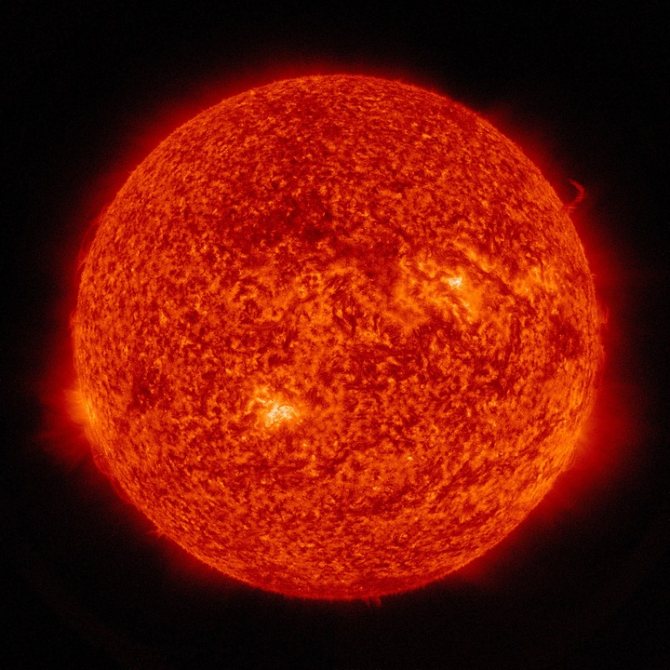
Space is limitless. Our entire endless solar system is just a particle in the Universe. In it and throughout space there are also such space objects as:
Efrem Levitan “For kids about stars and planets”
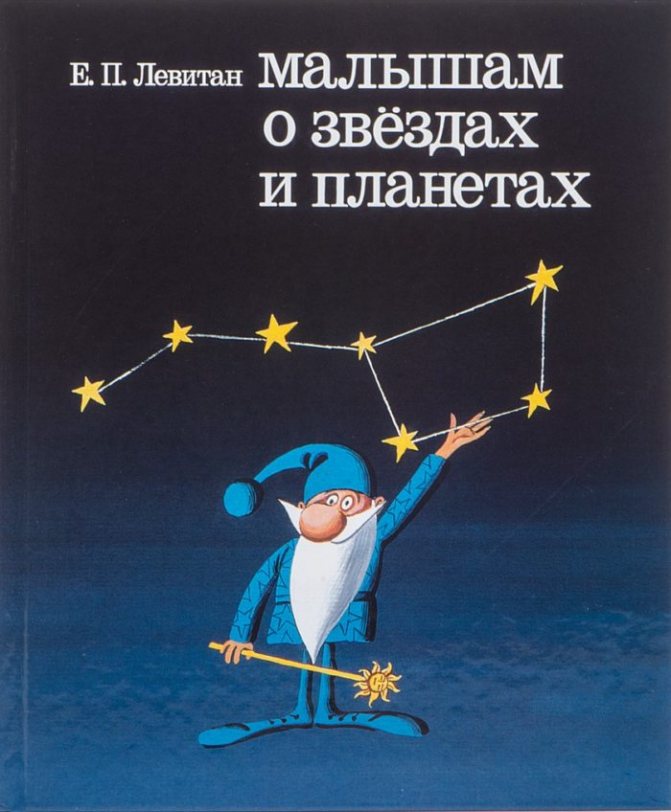
For children from 5 to 8 years old
The book by the famous teacher and popularizer of astronomy Efrem Levitan introduces children to the entertaining science of astronomy. The presentation of the material is mainly structured in the form of fascinating conversations between the characters: small children and their dad, who tells them stories about Gnome Knopkin, who loves astronomy and wants to share his knowledge about the Solar system, the phases of the Moon and much more. Each section of the book is accompanied by bright illustrations.
Excerpt from a book:
One day the Pope said:
— Gnome Knopkin told me very interesting news!
- Which one? - the children shouted.
— Soon you will see three planets in the sky: Venus, Mars and Jupiter.
One evening, the Pope showed the children three luminaries in the starry sky. They did not twinkle like stars, but shone with an even light: Mars was reddish, and Venus and Jupiter were bright white. They were even brighter than the stars.
- Dad, planets are not stars, so you can live on them?
“Of course,” said Papa. - After all, you live on planet Earth.
— Do people live on other planets? - Sveta asked.
“No,” answered the Pope. — In the family of the Sun, people live only on Earth.
Galaxies
Galaxies are clusters of groups of stars united by vast distances. Our galaxy, which includes the entire solar system and beyond, is called the Milky Way. Galaxies can be of different shapes: spiral, elliptical, irregular. For example, the most famous galaxies, the Andromeda Nebula and the Milky Way, have a spiral shape.
Galaxies can collide with each other, pass through one another and merge into a new larger galaxy.

Yuri Usachev “One Day in Space”

For children from 7 to 14 years old
This book invites readers to take an exciting journey - to spend one day in space. The author of the book is cosmonaut pilot and Hero of Russia Yuri Usachev, who completed four space flights and went into outer space several times. Here he appears as an experienced guide-commander of a ship in which children are his crew. Readers feel like they are taking a trip to the space station (ISS), trying to move in zero gravity, conducting experiments, and much more.
Excerpt from a book:
“You, like most people, think that astronauts still eat by squeezing food out of tubes, like toothpaste tubes, right? Unfortunately, I must disappoint you. Space nutrition has changed a lot over the past 40 years (…). With the advent of plastic packaging, it became possible to have in the astronauts’ diet not only pureed foods, but also the same cookies, fish, and meat.”
Asteroids
An asteroid is a rocky celestial body that has an irregular shape and varies in size: from a grain of sand to many kilometers of boulders. Due to the complete absence of gravity, asteroids cannot acquire a spherical shape, and therefore more closely resemble shapeless stones.
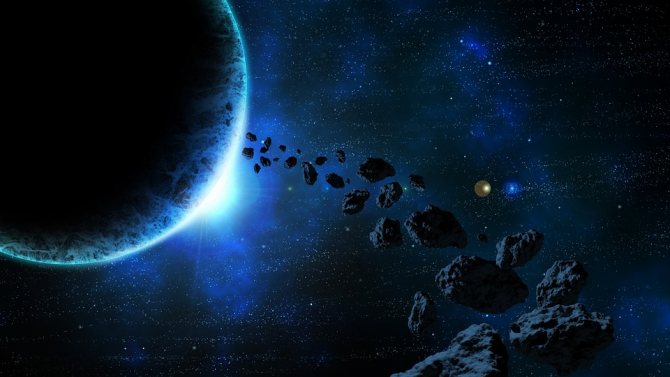
Asteroids are composed of iron, nickel, cobalt, oxygen, titanium, hydrogen and other elements. Asteroids can have craters and even satellites. And between Mars and Jupiter a whole asteroid belt formed. It’s very interesting about him and more, Smeshariki says:
Meteorites
Meteorites are pieces of celestial bodies, usually made of stone and iron, that fell to our Earth. They are of great value for science. After all, this is literally a piece of space. Scientists from all countries are trying to study these bodies as fully as possible.
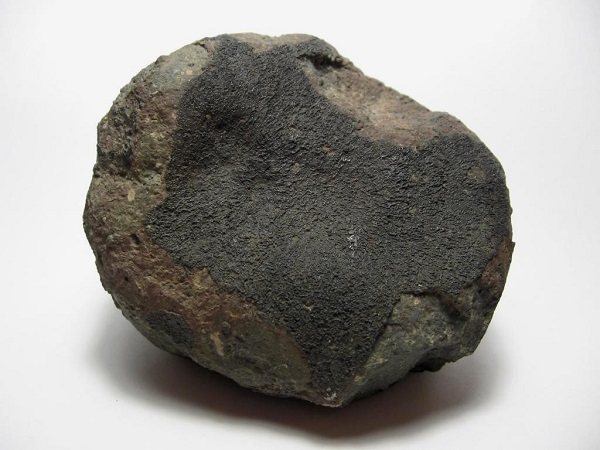
Meteorites come in different sizes: from small stones to large boulders. The places where they fell can turn into craters.
Sometimes entire meteor showers occur - the fall of hundreds and thousands of meteorites in a limited sector of the sky. The largest meteorite ever discovered on earth, weighing 100,000 tons, is currently located in West Africa's Aidar Desert. Most often, only very small meteorites, whose weight ranges from several grams to kilograms, reach the surface of our planet, protected by a reliable shield of the atmosphere.
Quasars
A quasar is a cosmic object that releases a huge amount of energy. They are the brightest and most distant “residents” of the Universe from us.
Space is an endless space with millions of different galaxies, planets and stars that have not been fully studied by scientists. Scientists who study space are called astronomers. Previously, people did not really know anything about space, but gradually they studied it and made discoveries.
The famous astronomer and scientist Nicolaus Copernicus proved that our Earth and other planets move around the sun. Another scientist, Isaac Newton, determined why the planets move around the sun and do not fall. Step by step, people all over the world are becoming familiar with the secrets of space, which will last for many centuries.
Books for children on the theme of space
- “Amazing starry sky. Atlas with stickers”, S. Andreev;
- “Discovering Space”, Morton Jenkins;
- “Professor Astrocat and His Journey into Space,” by Dominic Walliman and Ben Newman;
- “Space”, D. Kostyukov, Z. Surova;
- “Fascinating astronomy”, E. Kachur;
- Series “Your first encyclopedia”, book “Wonderful Planet”, publishing house “Makhaon”;
- Series “The Very First Encyclopedia”, book “Planet Earth”, publishing house “Rosman”;
- “My first book about space”, K. Portsevsky, M. Lukyanov;
- “Stars and planets. Encyclopedia for children”, E. Prati;
- “The extraordinary adventures of Petya in space”, A. Ivanov, V. Merzlenko.
We talk about our universe with the help of experiments
With the help of simple but effective experiments, it will be easier for you to explain to your child what space is. Below we present for you a small selection that your child will definitely like and help him understand.
Why don't we always see the full moon?
We take an ordinary table lamp and a ball. Rotate the ball so that, depending on the lighting, you can also see the full ball and only part of it in the form of a crescent. It's so easy to explain that we only see the illuminated part of the moon in the sky.
How a rocket flies
A very visual experiment with a balloon that will show your child the basic principle of a rocket taking off. We take a balloon, inflate it by hand, squeeze it with our finger, and then suddenly release it. The ball flies up, and when the air in it runs out, it falls. This is how a rocket flies. The only difference is that instead of air it has fuel, so during takeoff you can see fire and clouds of smoke.
The rocket consists of several parts. After takeoff, when the fuel runs out, the first part is disconnected, the engine of the second part is started, after the fuel is used up, it is also disconnected, and only one small, lightweight third part with the cosmonaut cabin goes into orbit.
You can watch how to make a rocket using the origami technique in the video on our channel “Rainbow Workshop”:
When did the word “space” appear in the Russian language?
“Historical and Etymological Dictionary of the Modern Russian Language” by P. Ya. Chernykh reports that the word “cosmos” has come into use in the Russian language (as well as in the West) since the second quarter of the 19th century. In the dictionaries of the Russian language, “cosmos” is from 1861, while “cosmography” is from 1780, and “cosmogony”, “cosmology” and the adjective “cosmic” are from 1804.
The primary source is the Greek word kosmos, which originally meant “order”, “ordered unity”, then “world order”, “world order”. For ancient philosophy, space is the highest example of the universe. Pythagoras was the first to designate the world that exists around man as space, drawing attention to the order and harmony that reigned in it. The Greek word kosmos, of course, was already known in the ancient Russian era and was translated with the words “beauty”, “peace”, “light”.
Before the word “space” entered the Russian language in the meaning “Universe; world; space extending beyond the earth’s atmosphere,” the corresponding meaning was expressed by the words “system of the world,” “system of light,” etc.
